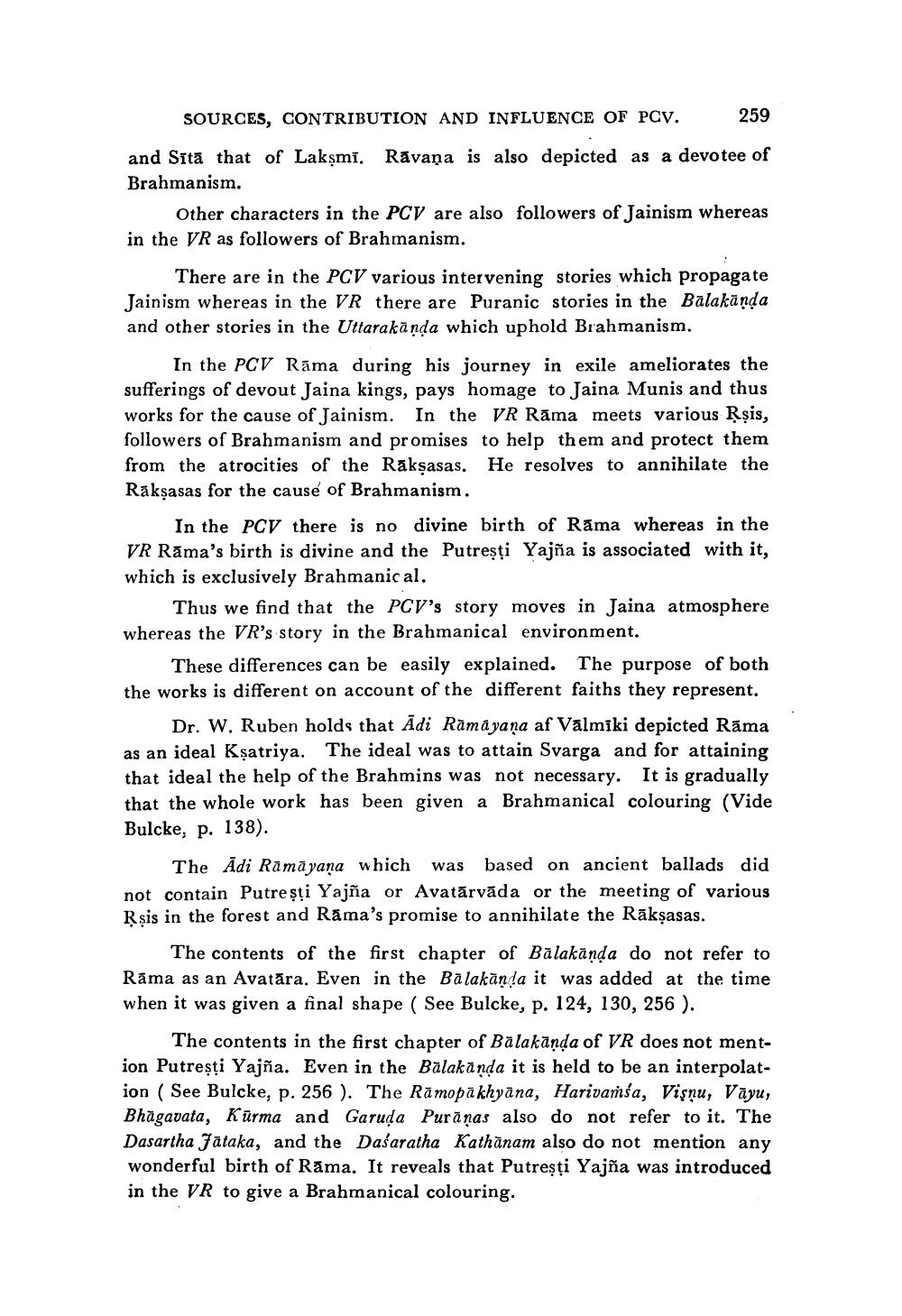________________
SOURCES, CONTRIBUTION AND INFLUENCE OF PCV.
259
and Sita that of Lakşmi. Rāvana is also depicted as a devotee of Brahmanism.
Other characters in the PCV are also followers of Jainism whereas in the VR as followers of Brahmanism.
There are in the PCV various intervening stories which propagate Jainism whereas in the VR there are Puranic stories in the Balakanda and other stories in the Uttarakānda which uphold Brahmanism.
In the PCV Rāma during his journey in exile ameliorates the sufferings of devout Jaina kings, pays homage to Jaina Munis and thus works for the cause of Jainism. In the VR Rāma meets various Rșis, followers of Brahmanism and promises to help them and protect them from the atrocities of the Raksasas. He resolves to annihilate the Raksasas for the cause of Brahmanism.
In the PCV there is no divine birth of Rāma whereas in the VR Răma's birth is divine and the Putrești Yajña is associated with it, which is exclusively Brahmanic al.
Thus we find that the PCV's story moves in Jaina atmosphere whereas the VR's story in the Brahmanical environment.
These differences can be easily explained. The purpose of both the works is different on account of the different faiths they represent.
Dr. W. Ruben holds that Ādi Rāmāyaṇa af Vālmīki depicted Rāma as an ideal Ksatriya. The ideal was to attain Svarga and for attaining that ideal the help of the Brahmins was not necessary. It is gradually that the whole work has been given a Brahmanical colouring (Vide Bulcke, p. 138).
The Adi Rāmāyana which was based on ancient ballads did not contain Putrești Yajña or Avatārvāda or the meeting of various Rşis in the forest and Rama's promise to annihilate the Rākşasas.
The contents of the first chapter of Balakanda do not refer to Rāma as an Avatāra. Even in the Balakānda it was added at the time when it was given a final shape See Bulcke, p. 124, 130, 256 ).
The contents in the first chapter of Balakānda of VR does not mention Putrești Yajña. Even in the Balakanda it is held to be an interpolation ( See Bulcke, p. 256 ). The Rāmopākhyāna, Harivamsa, Vişnu, Vayu, Bhagavata, Kūrma and Garuda Puranas also do not refer to it. The Dasartha Jataka, and the Dasaratha Kathānam also do not mention any wonderful birth of Rama. It reveals that Putrești Yajña was introduced in the VR to give a Brahmanical colouring.




